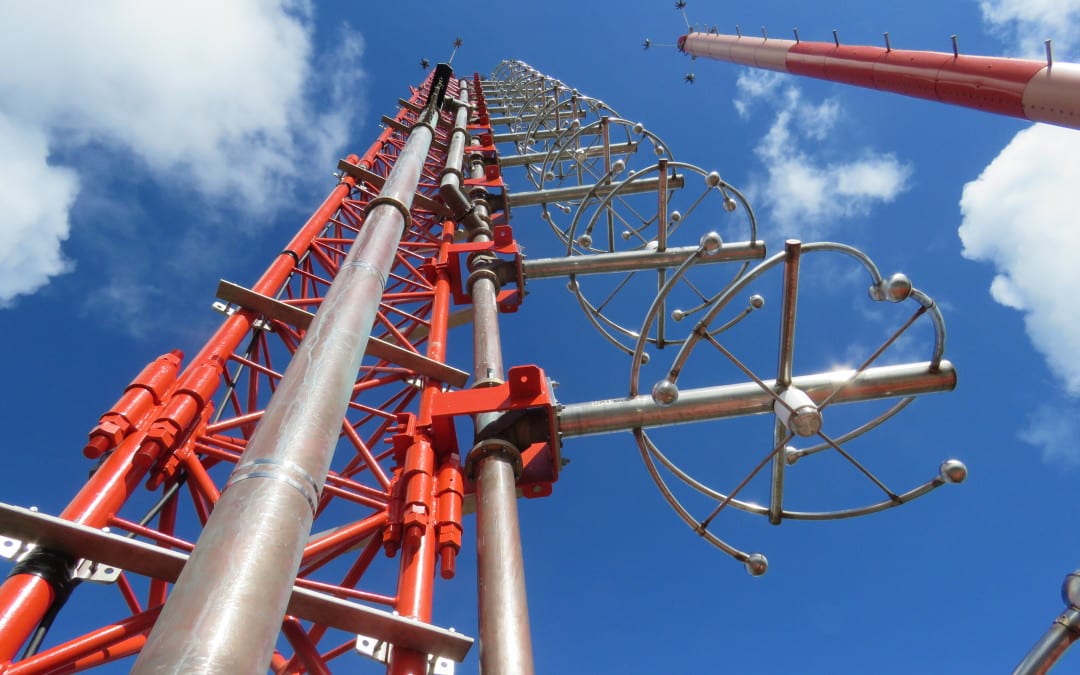New broadband antennas, two-channel combiner innovations address flexible installation, higher efficiency requirements across the RF infrastructure
RAYMOND, Maine – March 8, 2016 — Dielectric, a pioneer in purpose-engineered antennas and RF systems for TV and radio broadcasters, is ramping up innovation for FM broadcasters inside the plant and on the tower. With an emphasis on greater operational efficiency, reduced footprint, and broadband, multichannel operation, Dielectric comes to the 2016 NAB Show (April 18-21, Las Vegas Convention Center, Booth C2213) with new low- and high-power antennas to cover all power requirements; and a common case FM combiner that supports channel multiplexing across a lighter infrastructure.
“Dielectric has invested significant engineering effort into developing economical antenna and RF solutions for FM broadcasters,” said Keith Pelletier, General Manager of Dielectric. “Innovations include a panel antenna design for low-power broadcasters that reduces the size of the feed system by half, and a ring-style solution for high-power stations that greatly lowers the costs and complexity of sidemount installations. Inside the transmitter building, we’re returning precious real estate to tenants by eliminating components traditionally associated with the filtering process, while simplifying channel tuning. The result is high-quality engineering with a quicker return on investment for the broadcaster.”
Dielectric will display its new DCR-U and DCP-K antennas for low- and high-power broadcasters, respectively. The DCR-U is a broadband, circularly polarized ring antenna that minimizes tower footprint while doubling capacity. Its full bandwidth and high-power design characteristics—notably a pressurized tap point and four-inch balun—support capacity and high-voltage requirements for multi-station operations. The high-voltage protections are especially important for handling the immense voltage peaks that come with passing multiple analog FM and/or HD Radio stations through the same antenna.
“Most high-power FM antenna systems for multichannel use require a solution with panels wrapped around the entire tower,” said John Schadler, VP of Engineering, Dielectric. “Our ring-style solution integrates a single row of radiators that greatly reduces the complexity and offers a long-term savings, whether supporting one full-power FM station or a community of FM broadcasters operating from a shared site. It’s a very economical alternative to a sidemounted panel antenna.”
Panel antennas still offer plenty of benefits, especially when it comes to low- and medium-power applications. At NAB, Dielectric will introduce the DCP-K, a new broadband, circularly polarized panel antenna that reduces the number of cables required in the feed system by half. Instead of using the traditional hybrid feed system and dual-input panels, the DCP-K design incorporates a single input directly into the balun—thus reducing feed line count and connections, which equates to increased reliability. Overall, the DCP-K antenna’s compact and unobtrusive design provides a significant cost benefit to the low-power FM broadcaster, both upon installation and well into the future.
Inside the RF plant, Dielectric is returning real estate to the broadcaster through an innovative field-tunable, FM two-channel combiner that eliminates various traditional components from the design. This includes the absence of coaxial Tee junctions, as well as the associated coaxial line and elbows.
“Traditionally, a Tee junction, a pair of delay lines and filters are used to multiplex two channels. By removing the Tee and delay lines, we’ve reduced the combiner footprint for space-limited sites and improved efficiency,” said Derek Small, Senior Engineer, Dielectric. “The tunable common case design also protects the broadcaster’s investment in the event of a frequency change, allowing the station to use the same infrastructure instead of replacing filters and line.”
Operationally, the FM two-channel combiner provides signal isolation, achieved through an innovative cross-coupling design that also reduces the number of cavities in the combiner.


